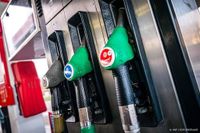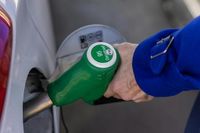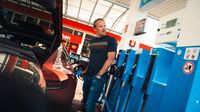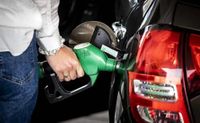As gasoline prices are expected to rise significantly in the coming years, many motorists are bracing for a financial hit. Minister of Infrastructure and Water Management Barry Madlener recently announced that the price per liter of gasoline will increase by 25.8 euro cents starting January 1, 2026, as the government’s discount on fuel excise duty is set to expire. This increase is part of a broader trend following the sharp rise in oil prices after Russia’s invasion of Ukraine in 2022.
Currently, the recommended price for a liter of gasoline stands at approximately 2.106 euros, but experts predict that without intervention, prices could soar to between 2.30 and 2.50 euros per liter by 2026, including VAT and European levies. This looming price hike has raised concerns among various stakeholders, including the Belangenvereniging Tankstations (BETA) and the ANWB, who warn that without government action, gasoline could become unaffordable for many.
“For motorists, this is not feasible,” said Martin van Eijk, chairman of BETA. “The difference with neighboring countries will be so great next year that border gas station holders will be significantly impacted.” Van Eijk emphasized that the price difference could reach 40 to 50 cents per liter more than in neighboring countries, which could drive customers away from Dutch gas stations.
The situation is further complicated by the fact that the excise duty discount, which was initially introduced to alleviate the burden of rising fuel prices, is being phased out. Half of this discount was removed in the summer of 2023, and while it was initially planned to expire in early 2024, it has now been extended to the end of 2025. The government’s decision to phase out this discount means that drivers will inevitably face higher costs.
In addition to the immediate price increase, further hikes are anticipated due to changes in EU regulations for oil producers scheduled for 2027 and 2030. According to Madlener, these regulatory changes will lead to additional costs that will likely be passed on to consumers. “We need to find a way to keep mobility affordable for everyone,” he stated, acknowledging the pressure on the government to act.
The ANWB has also voiced concerns about the affordability of driving, particularly for residents in rural areas who rely on their vehicles for daily transportation. A spokesperson for the organization remarked, “The excise duty discount was introduced to compensate for rising fuel prices. That discount is still needed and justified.” They highlighted that in the Netherlands, excise duties on fuel are already among the highest in Europe, and the situation is expected to worsen with the introduction of a CO2 levy, which will further increase fuel prices.
BOVAG, the Dutch trade association for the automotive sector, has called for a multi-year plan to address the growing concerns about fuel affordability. “Driving threatens to become unaffordable,” they warned, urging the government to take decisive action to ensure that mobility remains accessible for all.
As the government grapples with this complex issue, the pressure is mounting from various sectors to maintain the excise duty discount. The cost of reversing the fuel discount is estimated at around 1.6 billion euros, a significant financial consideration for policymakers.
As gasoline prices continue to rise, many drivers are left wondering how they will cope with the increased financial burden. The looming price hikes are expected to push more consumers toward electric vehicles (EVs), which are perceived as a more sustainable alternative. Barry Madlener believes that the impending fuel price increase will make EVs more attractive again, as consumers look for ways to mitigate their fuel expenses.
While the current gasoline prices may seem manageable, the forecasted increases have many questioning the sustainability of driving as a viable option for everyday transportation. The government’s role in regulating fuel prices and ensuring the affordability of mobility is becoming increasingly crucial as the situation evolves.
In conclusion, the expected rise in gasoline prices poses a significant challenge for consumers and the government alike. With various stakeholders calling for action, the coming months will be pivotal in determining how the government responds to these pressures and whether measures will be taken to ensure that driving remains affordable for all.








